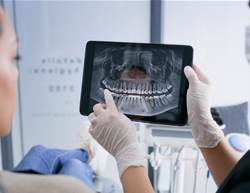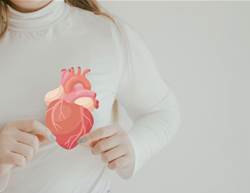Nearly two years ago, while on a ski trip, my husband began feeling ill. Steve, then 32, came off the slopes sweating bullets and needed my help to get up the two flights of stairs to our condo. We had no idea what was going on. Steve was healthy and in great shape. Had he gotten dehydrated?
Steve took a shower and I brought him cold water to dump on his head, but it didn’t help. He was still sweaty, his chest felt tight, and he couldn’t catch his breath.
I wanted to call an ambulance, but Steve wouldn’t hear of it. He wanted to drive himself to the hospital. I had to convince him to let me drive instead.
It took us 30 minutes to get to the nearest medical centre. Once there, Steve tried to act cooler than he was. He didn’t mention he was having chest pressure, and the triage nurse didn’t notice that he was clenching his chest while he was cracking jokes.
We sat in the waiting room. And sat. And sat. Finally, after 10 minutes, I pleaded with the nurse, “Something’s wrong with him! Take him back!”
She did. As soon as an EKG was done, I felt I was in a movie. Doctors ran into the room. Steve was given nitroglycerin. We quickly kissed goodbye and he was rushed to a helicopter that airlifted him to a Denver hospital with a specialised heart lab. Once it touched down, Steve went into full cardiac arrest. He was shocked and revived.
After four tries, doctors were able to insert a stent (a small flexible tube) to open up the blocked artery that had caused Steve's heart attack. He spent two days in the ICU before he was able to come home and begin the recovery process. But although he’s always been healthy, active, and a nonsmoker, this scary close call caused us to re-evaluate, well, pretty much everything. And as a result, we've made some important changes.
(Want to pick up some healthier habits? Sign up for FREE to get healthy living tips, weight loss inspiration, slimming recipes and more delivered straight to your inbox!)
We dug deeper into our family history.
Although Steve’s had high blood pressure since he was a teenager (and been on medication for it,) we'd never asked about his family's medical history or known he was at risk of a heart attack. Once we realised how important it is to know if disease runs in your family, we questioned our relatives and learned heart disease runs in both our families.
Exercise has become a daily habit.
Before Steve's heart attack he was working out 3-4 days a week. Since the event—after he was cleared by his doctor—he's been riding his bike or lifting weights every day.
We cut back on alcohol.
We used to have a glass of whiskey every now and then, but Steve's doctor cautioned him to drink only in moderation. Now, maybe we’ll have a small glass of wine—red only—every week or two.
Our diet went from healthy to really healthy.
Before Steve’s heart attack, if we wanted a burger or pizza, we’d indulge. We’ve since given up all red meat. We hardly add any salt to food we cook, and we try to rely on salt-free seasonings. Although we avoid processed foods, if we do eat them, we look for “reduced sodium” brands.
Stress gets managed, not pushed aside.
I used to call Steve “Mr. Business” as a joke. He worked so much and let stress from his job as an environmental scientist come home with him. Now, he lets it go. We read about meditation and stress management and have mindfulness apps on our phones. And if Steve feels tense, he’ll hop on the rowing machine in our basement or take our dog for a walk.
We’re a team.
It’s hugely traumatic when your partner has a heart attack, and I’ve become extremely protective of Steve. (At first, I’d get offended if someone asked us to so much as go out for a burger.) I’ve also become his advocate. I go to all his cardiology appointments, not just to provide moral support, but so I can hear what the doctor says with my own ears.
Heart disease is in our genes, as well as those of our 1-year-old baby. Anything I can do to keep my family healthy, I will.










